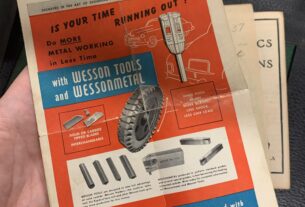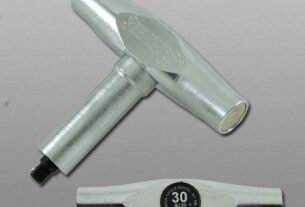Are you tired of struggling with sheet metal bending? Do you want to improve your productivity and efficiency in the sheet metal fabrication process? Look no further than the sheet metal hemming tool.
In this comprehensive guide, we’ll cover everything you need to know about sheet metal hemming tools, from their benefits and features to how to choose the right one for your needs. We’ll also provide tips and tricks for using these tools effectively and efficiently.
So, let’s dive into what makes sheet metal hemming tools so essential for any metalworking project.
What is a Sheet Metal Hemming Tool?
A sheet metal hemming tool is a specialized device used to bend and fold sheet metal edges. It creates a folded edge (hem) that increases the strength and rigidity of the material while also serving an aesthetic purpose.
Hemming is a critical process in many industries, including automotive, aerospace, HVAC, and construction. It’s used to create a wide range of products such as car bodies, ductwork, enclosures, and more.
Without proper hemming techniques, sheet metal can easily bend or warp during use. A reliable hemming tool ensures that the final product will be structurally sound and aesthetically pleasing.
Benefits of Using a Sheet Metal Hemming Tool
Using a sheet metal hemming tool has many advantages over traditional bending methods:
1. Increased Strength and Durability: A properly hemmed edge provides extra rigidity and strength compared to an unbent edge. This added strength can prevent warping or buckling under stress or weight.
2. Improved Appearance: Hemmed edges give a polished look to finished products. They eliminate sharp edges and provide clean lines for a professional appearance.
3. Time-Saving: Hemming tools streamline the bending process by eliminating the need for multiple bends or manual hammering. They also reduce the risk of errors or mistakes during the bending process.
4. Versatility: Hemming tools can be used on a wide variety of sheet metal thicknesses and materials, making them an essential tool for any metalworking project.
Types of Sheet Metal Hemming Tools
There are several types of sheet metal hemming tools available, each with its unique features and benefits:
1. Manual Hand-Held Hemming Tool: This is the most basic type of hemming tool. It’s a handheld device that clamps onto the sheet metal edge, allowing you to bend it over manually. This type of tool is best for small projects or occasional use.
2. Pneumatic Hemming Tool: This type of tool uses compressed air to control the bending process. It’s faster and more powerful than manual hand-held tools and is suitable for larger projects.
3. Hydraulic Hemming Tool: Hydraulic hemming tools are the most powerful type of hemming tool. They use hydraulic pressure to bend thicker sheets of metal quickly. These tools are ideal for heavy-duty industrial applications.
Choosing the Right Sheet Metal Hemming Tool
Choosing the right sheet metal hemming tool depends on several factors:
1. Project Size: The size of your project will determine what type of hemming tool you need. For small projects, a manual or hand-held tool may suffice, while larger projects will require a pneumatic or hydraulic tool.
2. Material Thickness: The thickness of your sheet metal will determine how much power your hemming tool needs to have. Thicker materials require higher levels of power to bend effectively.
3. Budget: Like any other piece of equipment, sheet metal hemming tools vary in price depending on their quality and features. Consider your budget when choosing a hemming tool.
Tips for Using Sheet Metal Hemming Tools Effectively
Using a sheet metal hemming tool effectively requires some practice and attention to detail:
1. Use the Right Tool for the Job: Choose a hemming tool that’s appropriate for your project size and material thickness.
2. Adjust the Hemming Tool Properly: Make sure to adjust the tool to the correct position and pressure level before starting the bending process.
3. Clamp the Sheet Metal Securely: Ensure that your sheet metal is clamped securely in place before using a hemming tool. This will prevent slippage or mistakes during the bending process.
4. Use Protective Gear: Wear gloves and eye protection when using a hemming tool, as it can create sharp edges or metal shards.
Conclusion
A sheet metal hemming tool is an essential piece of equipment for any metalworking project. It improves productivity, streamlines the bending process, and creates a polished finished product.
When choosing a sheet metal hemming tool, consider your project size, material thickness, and budget. And remember to use proper techniques when using these tools to ensure safety and efficiency.
With our guide, you’re now equipped with all the knowledge you need to choose and use a sheet metal hemming tool effectively. Happy bending!
Sources:
1. https://www.thomasnet.com/articles/machinery-tools-supplies/sheet-metal-hemming-tools/
2. https://www.metalformingmagazine.com/article/?/fabrication/bending/the-benefits-of-hemming-sheet-metal
3. https://www.airhydraulics.com/products/hydraulic-hemming-tool/
4. https://www.baileigh.com/blog/the-right-way-to-use-a-manual-hand-held-hemmer/
5. https://www.hunker.com/13402932/how-to-use-a-sheet-metal-brake




